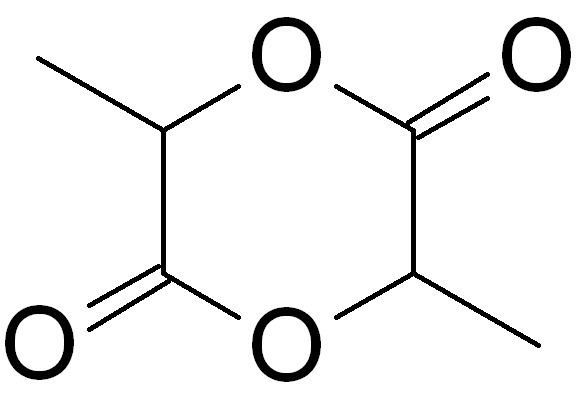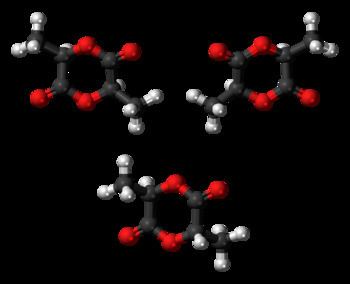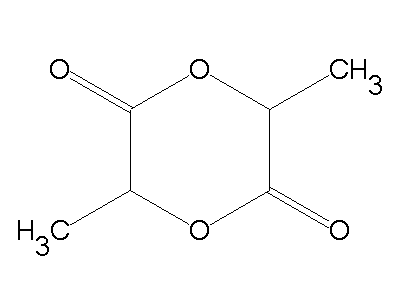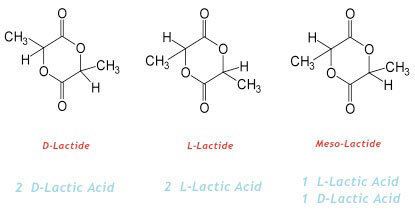 | ||
Lactide the widows kiss
Lactide is the cyclic di-ester of lactic acid, i.e., 2-hydroxypropionic acid. Lactic acid cannot form a lactone as other hydroxy acids do because the hydroxy group is too close to the carboxylic group. Instead, lactic acid first forms a dimer, which is similar to a 5-hydroxyacid. The dimer contains a hydroxy group at a convenient distance from the carboxylic group for the formation of a lactone. Indeed, the dimer readily forms a six-membered cyclic diester known as lactide. Lactides may be prepared by heating lactic acid in the presence of an acid catalyst.
Contents

In general, a lactide is the cyclic diester, i.e., the di-lactone of two molecules of any 2-hydroxycarboxylic acid.
Lactide meaning
Stereoisomers

Lactic acid is chiral; two enantiomeric forms, (R)-lactic acid and (S)-lactic acid, may exist. Thus, lactide formed from two equivalents of lactic acid consists of two stereocenters. Three different stereoisomers of lactide are known:
Polymerization

Lactide can be polymerized to polylactic acid (polylactide) using suitable catalysts, with either syndiotactic or a heterotactic stereocontrol, to give materials with many useful properties:

